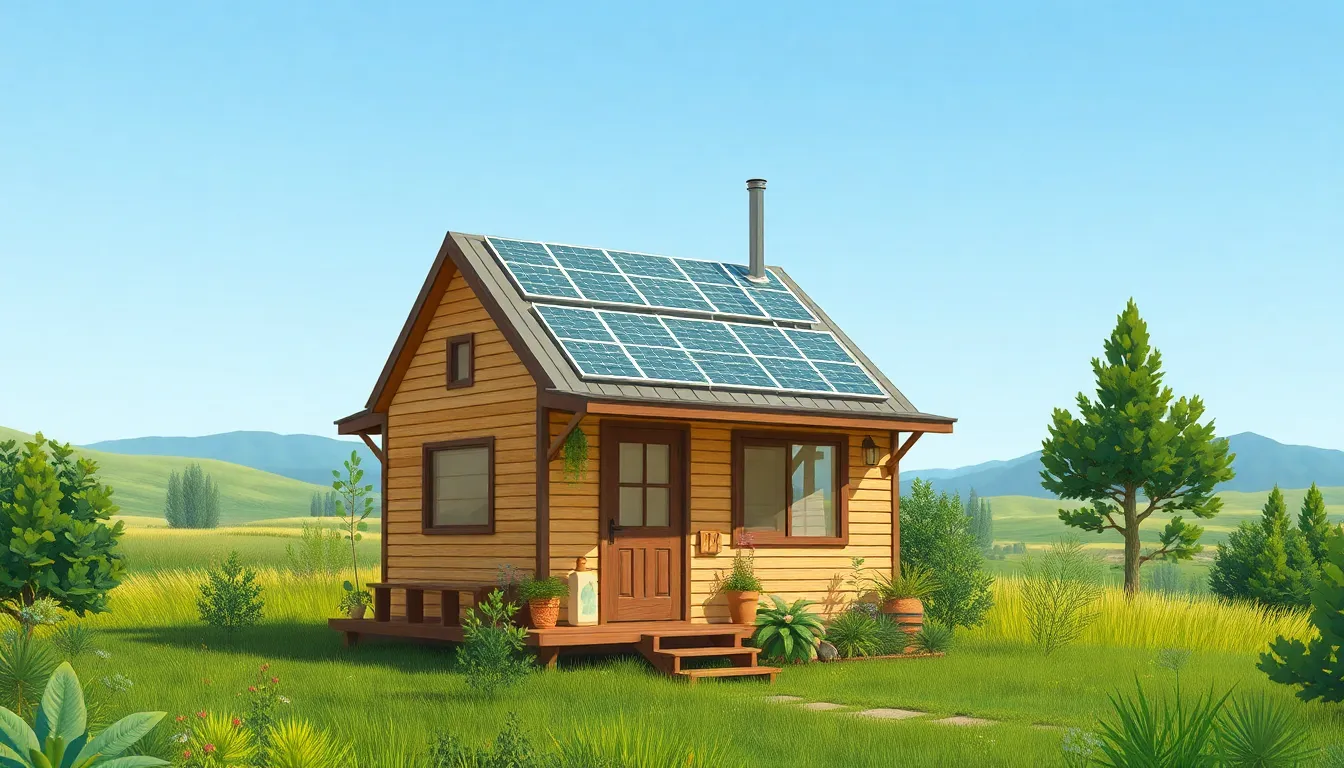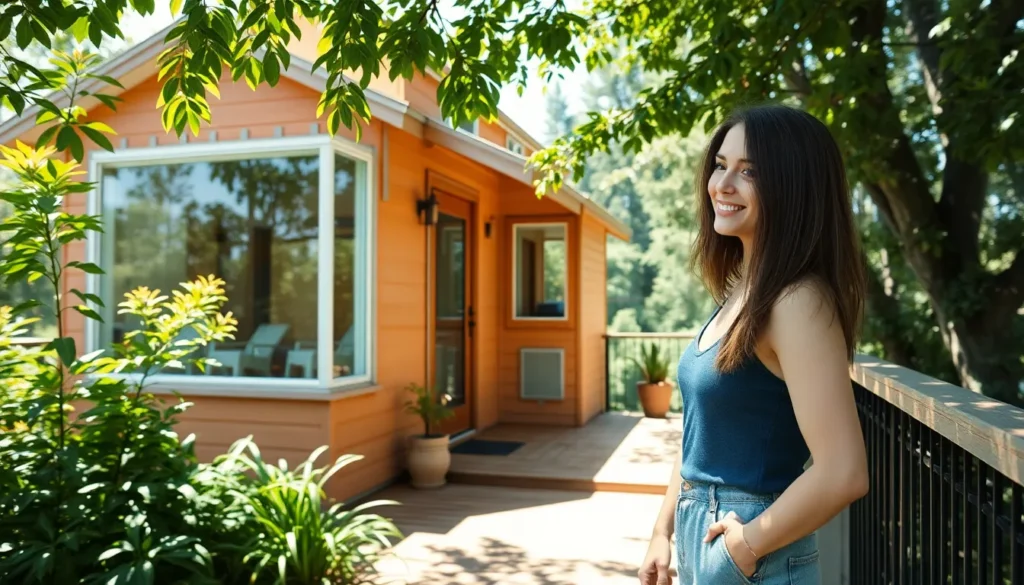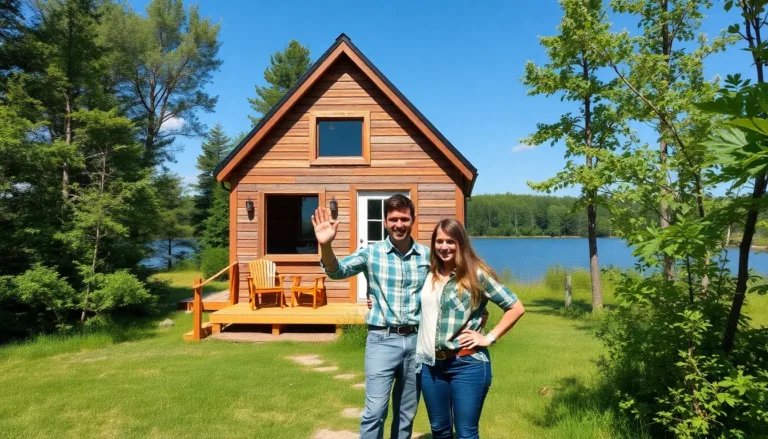Table of Contents
ToggleIn a state where real estate prices could make a millionaire weep, tiny homes in California are stealing the spotlight. Imagine living large in a pint-sized paradise where every square foot is a masterpiece of design and functionality. These cozy abodes are not just a trend; they’re a lifestyle revolution, proving that less really can be more—even if it means sacrificing that spare room for a quirky reading nook.
With the golden coast as a backdrop, tiny homes offer a chance to embrace simplicity without sacrificing style. They’re perfect for the eco-conscious adventurer or the minimalist at heart. So whether it’s a chic mobile unit or a stationary gem tucked away in the hills, tiny homes are reshaping the way Californians think about space, sustainability, and living their best lives—one tiny square foot at a time.
Overview Of Tiny Homes In California
Tiny homes in California represent a growing movement toward efficient living. As housing prices soar, these compact structures offer an affordable alternative.
Definition And Characteristics
Tiny homes typically range from 100 to 400 square feet. They embody a minimalist lifestyle, often featuring innovative storage solutions and multipurpose furniture. Many designs emphasize sustainability, using eco-friendly materials and energy-efficient appliances. Styles differ, from rustic to modern, catering to diverse tastes. A strong community aspect often accompanies these homes, encouraging shared resources and communal living.
Popularity And Demand
The demand for tiny homes in California has surged in recent years. Recent statistics indicate a 60% increase in tiny home sales since 2020. Buyers include young professionals, retirees, and families seeking affordable housing alternatives. Urban areas drive this interest, with zoning laws evolving to accommodate small dwellings. Many find these homes appealing due to lower living costs and reduced environmental impact. Active social media communities further inspire this growing trend.
Benefits Of Tiny Homes

Tiny homes offer numerous advantages, making them increasingly popular in California. These benefits include affordability and a positive environmental impact.
Affordability
Affordability stands out as a primary advantage of tiny homes. With rising housing costs in California, tiny homes present a viable option for many. Average costs for these compact dwellings range from $30,000 to $60,000, significantly lower than traditional homes. Savings extend beyond purchase prices; reduced utility expenses and minimal maintenance contribute further to financial benefits. Many individuals find small-scale living enables them to invest in experiences instead of possessions. The 60% boost in sales since 2020 confirms intense interest in affordable housing solutions. Affordability appeals to various demographics, including young professionals and retirees seeking cost-effective living arrangements.
Environmental Impact
Environmental impact plays a crucial role in the allure of tiny homes. These dwellings typically consume 80% less energy than standard houses, promoting eco-friendly living. Many tiny homes incorporate renewable energy sources such as solar panels, further enhancing their sustainability. Limited square footage encourages minimalism, reducing waste and resource consumption. Building materials often prioritize eco-friendly options, aligning with the values of environmentally conscious homeowners. As the demand for sustainable living increases, tiny homes present a practical solution for reducing carbon footprints. Residents actively contribute to a greener future with their decision to downsize. Overall, tiny homes reflect a progressive shift toward eco-awareness in housing choices.
Legal Considerations
Tiny homes in California face specific legal frameworks that vary by location. Understanding zoning laws and building codes becomes essential for potential homeowners.
Zoning Laws
Zoning laws dictate where tiny homes can be placed. These regulations vary significantly across cities and counties. Some areas allow tiny homes on private land, while others restrict their placement to designated zones. Certain jurisdictions require tiny homes to be part of a tiny home community or a mobile park for legal habitation. Checking with local planning departments remains crucial for compliance. Ensuring that the desired location adheres to zoning laws helps prevent future legal issues.
Building Codes
Building codes establish safety and structural standards for tiny homes. These codes often require tiny homes to meet specific requirements regarding insulation, plumbing, and electrical systems. Construction materials and methods used in building also fall under scrutiny. Typically, tiny homes must receive proper permits before construction begins. Following these guidelines increases the likelihood of successful inspections and occupancy permits. Engaging with local authorities during the planning phase supports compliance and overall project success.
Design Ideas And Inspiration
Tiny homes offer unique design opportunities that emphasize functionality and style. These compact spaces cater to various tastes while maximizing every inch effectively.
Innovative Layouts
Space-saving designs characterize many tiny homes. Multi-functional furniture, such as sofa beds and foldable tables, enhances usability, allowing residents to adapt their living spaces for different needs. Open floor plans create an illusion of more space, while clever storage solutions like built-in shelves and under-bed drawers keep clutter at bay. Lofted sleeping areas efficiently utilize vertical space, freeing up the ground floor for living and entertaining. The incorporation of large windows invites natural light, contributing to an airy ambiance. Functionality often drives creative layouts, making every square foot purposeful for comfortable living.
Sustainable Materials
Sustainability plays a crucial role in the design of tiny homes. Many builders choose eco-friendly materials such as reclaimed wood and bamboo for flooring, which reduces environmental impact. Insulation made from recycled products enhances energy efficiency, keeping homes comfortable without excessive energy use. Solar panels frequently adorn roofs, harnessing sunlight for renewable energy. Water-saving fixtures and low-VOC paints further promote a healthy living environment. Opting for sustainable materials not only supports eco-conscious living but also offers durability and style, aligning with the minimalist ethos of tiny home inhabitants.
Communities And Resources
Tiny home communities in California promote connection and collaboration among like-minded individuals. These villages serve as a practical solution for people seeking affordable living environments. Areas like the Amara Community in Shasta County showcase clusters of tiny homes designed to foster sustainable living practices and community engagement. Residents often share resources and organize events, enhancing the sense of belonging within such spaces.
Online support groups provide valuable resources and camaraderie for tiny home enthusiasts. Platforms like Facebook and Reddit host active communities where members share tips, experiences, and inspiration. Discussions often cover practical advice on construction, zoning challenges, and interior design solutions. Additionally, these groups create opportunities for networking, allowing individuals to form connections and even collaborate on projects, strengthening the tiny home movement across California.
Tiny homes in California are more than just a trend; they’re a transformative movement reshaping how people think about living. As housing costs continue to rise, these compact dwellings offer a practical solution for those seeking affordability and sustainability.
With innovative designs and a focus on eco-friendly materials, tiny homes appeal to a diverse range of individuals from young professionals to retirees. The growing acceptance of tiny home communities fosters a sense of belonging while promoting shared resources and sustainable practices.
As this lifestyle gains momentum, it reflects a broader shift toward minimalism and environmental consciousness, paving the way for a new era of housing in California.







